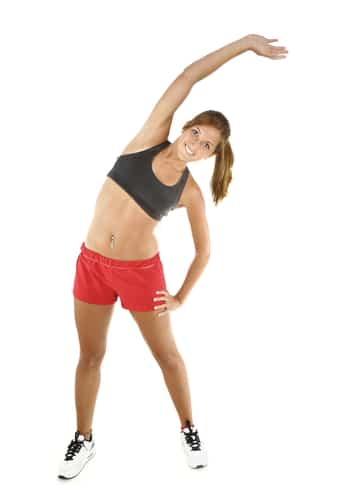
Recovery not only refers to what you do after a workout, but it also applies to interval training, workouts where you do alternating periods of intense exercise and recovery. Recovery between intervals can be passive or active. If it’s passive, you stand or sit between intervals or do light stretching exercises. If it’s an active recovery, you would continue to exercise at a sub-maximal intensity until the next active interval when you would again pick up the pace.
Active Recovery versus Passive Recovery: Which is Best?
When doing interval training, research suggests an active approach to recovery is best. When you exercise at a high intensity, lactate builds up in your muscles and bloodstream during the active intervals and your blood becomes more acidic. This acidity interferes with the ability of your muscles to contract, meaning you won’t be able to work as hard during the next active interval. This increase in acidity contributes to the burning sensation you get in your muscles when you work them intensely. Not only does it interfere with muscular contraction, but it may also psychologically keep you from putting forth your best effort during the next interval due to discomfort.
Research suggests that active recovery between exercise intervals seems to improve performance on the next interval. When you stay active between work intervals, it speeds up the removal of lactate and helps to reduce the acidity that hinders performance when you increase the intensity again.
Many experts don’t believe it’s lactate that causes the fatigue and burning you experience after intense exercise but the build-up of hydrogen ions that occurs along with the lactate. This increases acidity. One theory is that the hydrogen ions make contractile proteins within the muscles less sensitive to calcium so they can’t generate as much force.
Based on this, it’s more beneficial to exercise at a sub-maximal intensity between active intervals than to stop moving entirely. On the other hand, there is research suggesting that passive recovery between intervals delays time to exhaustion so you may be able to exercise a little longer before being overcome by fatigue.
Active Recovery versus Passive Recovery after a Workout
After completing a workout, it’s best to actively recover than to sit down. Not only does lower intensity activity help to reduce acidity and aid removal of lactate, it reduces venous pooling. During exercise, your muscles are actively pumping. This pushes on veins and increases blood flow back to the heart. If you stop suddenly, blood can “pool” in your veins and decrease blood return to your heart, leading to a drop in blood pressure or fainting. When you keep moving at a lower intensity, an active cool-down, you prevent sudden changes in blood pressure.
What about Recovery between Workouts?
After you’ve done a hard workout, should you take it easy the next day or do low-intensity activity? Although it makes sense that doing light activity might prevent delayed onset muscle soreness by increasing blood flow, there’s not a lot of evidence that it does. Still, some people feel better doing a light workout the next day, light jogging or stretching. Yoga is another good alternative for recovery days. Light exercise is best for a recovery day since your muscles need time to replenish glycogen stores. If you’ve done a resistance-training workout, your muscles also need time to repair.
Other Ways to Recover after a Workout
It’s important to replace lost fluids as quickly as possible. You can get a rough idea of how much fluid you’ve lost by weighing yourself before and after a workout. Eating a carbohydrate and protein meal within a one hour “window period” after exercise helps to speed amino acids to your muscles and replenish glycogen stores more quickly. It’s also important to get enough sleep. Lack of sleep raises cortisol levels. This interferes with recovery and increases your risk for infection by suppressing your immune system. If you do high-intensity workouts, sleep should be a priority.
The Bottom Line?
Keep these tips in mind when you’re doing interval workouts or taking a recovery day. Whether it’s passive or active, your body needs time to rest and recover.
References:
Canadian Journal of Applied Physiology, 1993, 18(1): 31-42, 10.1139/h93-004.
Med Sci Sports Exerc 2004; 36(2):302-308.
Sports Science Exchange. 87:15. (2002)
Exercise Physiology. Fifth Edition. McArdle, Katch, and Katch. (2001)
Related Articles By Cathe:
5 Factors That Impact How Much Recovery Time You Need Between Strength-Training Workouts
Can Active Rest Between Sets Help You Build More Muscle?
Why Recovery Days Are Important for Getting Fitter
Can Active Recovery Between Strength-Training Sets Boost Your Fitness Gains?

